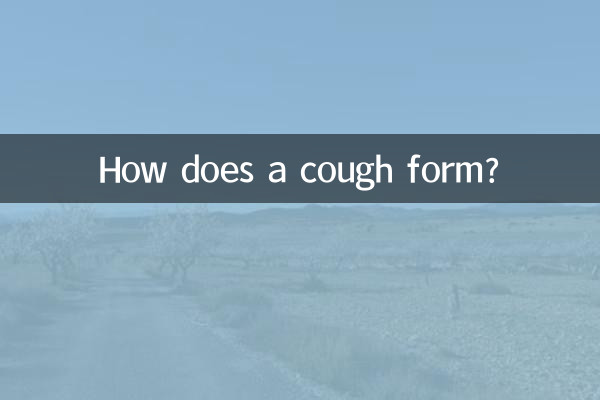How does a cough form?
Coughing is a self-protection mechanism of the human body used to clear foreign matter or secretions from the respiratory tract. Although cough is common and mostly transient, its formation mechanism involves complex physiological processes. This article will combine the hot topics and hot content on the Internet in the past 10 days to conduct a structured analysis from the causes, types, related diseases, prevention and treatment methods of cough.
1. The formation mechanism of cough

Coughing is a reflex action primarily triggered by:
| stage | physiological process |
|---|---|
| 1. Stimulate | The respiratory tract is irritated by foreign bodies, inflammation or secretions |
| 2. Signal transmission | Nerve signals are transmitted via the vagus nerve to the bulbar cough center |
| 3. Action execution | After deep inhalation, the glottis closes, the diaphragm and intercostal muscles contract, the chest pressure increases, the glottis suddenly opens, and the air rushes out at high speed |
2. Common types and causes of cough
Coughs can be divided into the following categories based on duration and cause:
| Type | duration | Common causes |
|---|---|---|
| acute cough | <3 weeks | Colds, flu, inhalation of foreign bodies, etc. |
| subacute cough | 3-8 weeks | Post-infectious cough, bronchitis |
| chronic cough | >8 weeks | Asthma, gastroesophageal reflux, chronic obstructive pulmonary disease (COPD) |
3. Recent hot related topics
Combining the data from the entire network in the past 10 days, the following health topics are highly related to cough:
| hot topics | Related content |
|---|---|
| "High incidence of mycoplasma pneumonia" | Persistent cough with fever in children |
| "Flu Season Protection" | Dry cough as one of the typical symptoms of influenza |
| "Coping with Allergy Season" | The relationship between allergic cough and pollen/dust mites |
| "Long term cough warning" | Cough that lasts for more than 2 months should be checked for possible lung cancer |
4. Symptoms and disease tips associated with cough
Coughs with different characteristics may indicate different diseases:
| Cough characteristics | possible disease |
|---|---|
| Worsened at night with wheezing | bronchial asthma |
| Seizures after eating | gastroesophageal reflux cough |
| metallic sound cough | Compression of the trachea (such as goiter) |
| Bloody sputum | Tuberculosis, bronchiectasis |
5. Prevention and treatment suggestions
Based on recent medical guidelines and hot discussions, the following measures are recommended:
| measures | Specific content |
|---|---|
| environmental control | Use an air purifier (excessive PM2.5 standards have become a hot topic recently) |
| diet modification | Honey water relieves cough (recommended by WHO) |
| drug selection | Dextromethorphan for dry cough and guaifenesin for expectoration |
| Vaccination | Influenza vaccine (vaccine gap issue attracts attention this winter) |
6. When Do You Need Medical Treatment?
You should seek medical attention promptly if the following situations occur:
| red flag | Possible reasons |
|---|---|
| Fever persists for >3 days | bacterial pneumonia |
| difficulty breathing | Acute laryngitis/pneumothorax |
| weight loss | wasting disease |
| night sweats | tuberculosis infection |
In summary, cough is a common manifestation of multi-system diseases, and its formation mechanism involves complex neural reflex pathways. In light of recent health hotspots, special attention needs to be paid to new trends such as mycoplasma infections and influenza mutant strains. Correctly identifying the type of cough and accompanying symptoms can help detect serious illnesses early. (The full text is about 850 words in total)

check the details

check the details